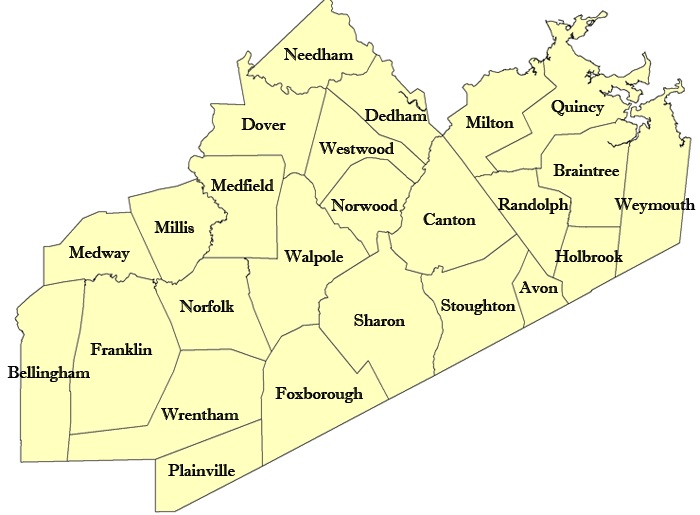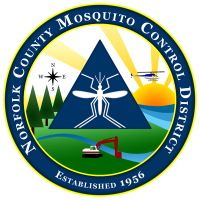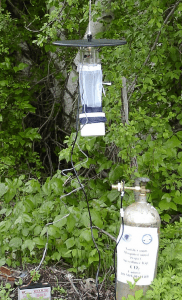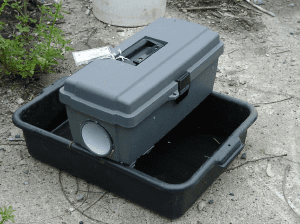Surveillance Map
Select your town from the map to view its mosquito surveillance data

Larval Surveillance
Early in the season we sample wetlands throughout the county to accumulate data on larval mosquito populations. These data are used in determining whether the wetlands are treated by land or by air. The larvicide we use is derived from a naturally occurring soil bacteria and specifically targets mosquitoes. For more info on what products we use please follow our Products link here.
Adult Mosquito Surveillance
We use adult surveillance data to make important decisions on when and where to treat for mosquitoes based on population size, mosquito species present, and the presence of mosquito borne viruses. We collect adult mosquitoes with CDC Light Traps, which use a carbon dioxide source to attract blood-seeking female mosquitoes.
CDC light trap with CO2 tank attached
In addition to the above CDC light trap, we use the Reiter-Cummings gravid trap to collect mosquitoes which have already blood-fed and are ready to lay eggs. Many mosquito species (especially the primary vector of WNV, Culex pipiens) lay their eggs on the surface of stagnant pools of water. The gravid trap takes advantage of this egg laying behavior by using a basin filled with organically-infused water beneath the trap as an attractant.
Reiter-Cummings gravid trap
For more information about mosquito surveillance, insect biology, pesticides, and related topics, please use the form below. NOTE: Please do not use this form to make requests for mosquito treatments. Those requests can be made here
Contact the Entomologist



